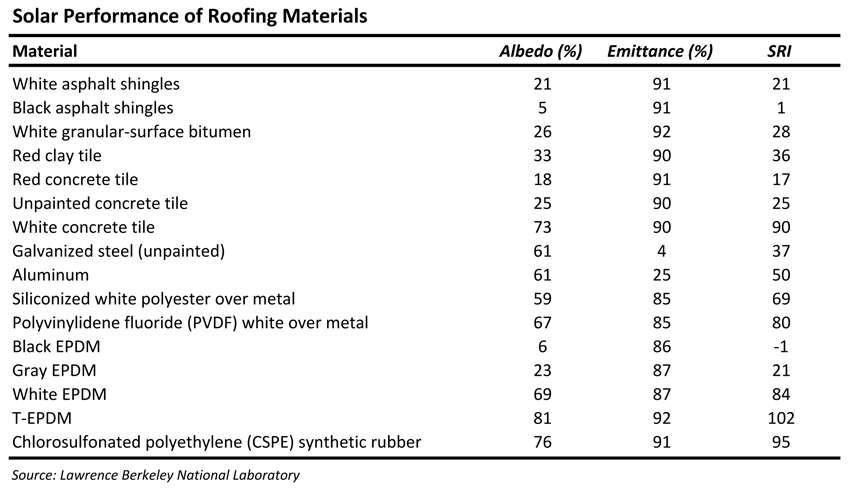Scientists use a number between 0 and 1 or 0 and 100 to express emittance.
Infrared emittence of steel roof.
The infrared emittance of a roof is a measure of absorbed solar radiation that is remitted from the roof surface to the sky.
Emittance of metal roofing varies with the surface finish.
Emissivity as high as 90 can be achieved for painted and granular coated roofing.
With the exception of a metallic surface most roofing materials can have emittance values above 0 85 85.
Shiny metal roofs can have a relatively high solar reflectance upwards of 0 60 but they tend to have low thermal emittances which can make them as hot as dark roofs.
The emittance of a material refers to its ability to release absorbed heat.
New infrared reflective pigments incorporated into paints used on architectural metal roofing products allow them to achieve higher reflectivity values even in darker colors such as black and brown.
Metal roofs with oven cured pre painted organic coatings that incorporate new cool pigment technology offer high total solar reflectance and high infrared emittance even with darker colors.
They can also reduce the urban heat island effect.
Emittance of painted or granular coated metal roofing can be as high as 90 percent.
Emittance of painted metal roofing can be as high as 90.
Today though critics of metal roofs often use the title of the pulitzer prize winning play as an argument to dispel the notion that metal roofing can be cool and energy efficient.
In terms of how cool roofs work solar reflectance is a process in which a roof reflects the sun s uv and infrared rays and thermal emittance refers to a roof s ability to radiate absorbed non reflected.
Cool roofs are roofing systems which create a higher solar reflectance and thermal emittance when compared to other roofing products.
Solar reflective index sri.
Therefore they would not be good materials for cool roofs.
Emittance of metal roofing varies with the surface finish.
One example is a metal wrench left.
Mindful that reflectance and albedo can be different a combination of high albedo and high emittance resists solar heat gain most effectively.
Thermal emittance values of nonmetallic surfaces are generally between 0 80 and 0 90.
However emittance also matters because the higher the emittance the more readily the roof surface will radiate long wave ir heat to the sky.
Where annual cooling loads dominate a highly reflective and highly emissive.
The infrared emittance of a roof is a measure of absorbed solar radiation that is re emitted from the roof surface to the sky.

